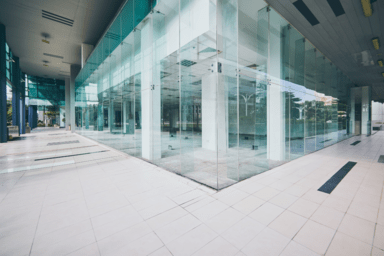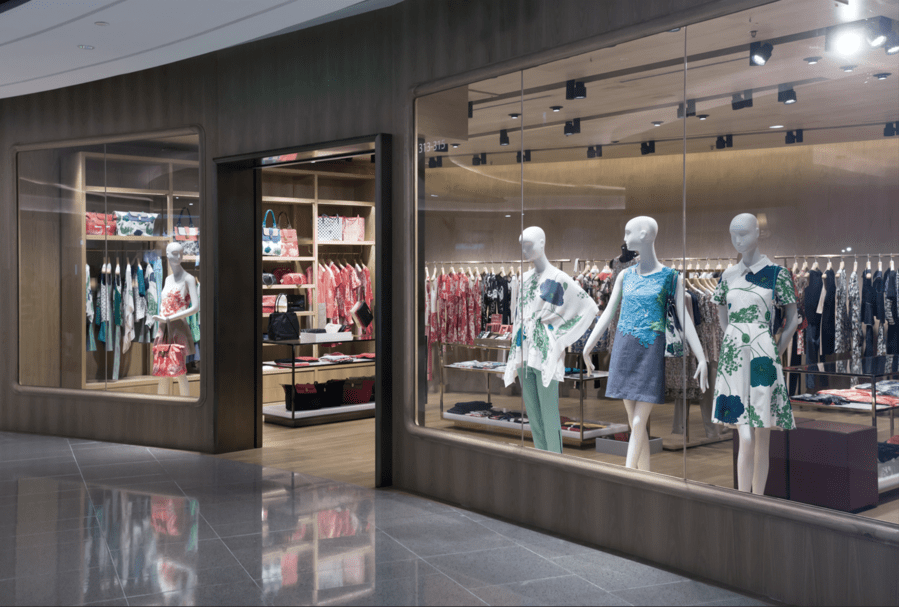
Retail Parks vs. Shopping Centers: A Comparison of Concepts

Has the Era of Shopping Center Construction Come to an End?
All signs point to the gradual decline of mass shopping center development — those large-scale "shoppings" so popular with customers. In their place, a different retail format is beginning to take center stage.
How is retail changing in Slovakia?
Over the past ten years, perhaps with the exception of the pandemic, shopping centers in Slovakia have been built and expanded every year. However, following last year's extension of Bratislava's Aupark, analysts from the real estate consultancy CBRE anticipate that we won't see such significant development in the coming years, at least not in this segment.
Since 2023, the development of retail parks has taken the lead. Unlike shopping centers, where shops are housed under one roof and typically span multiple floors, retail parks are single-story and each store has its own entrance. While Aupark was expanded by 10,000 m² and Aquario Nové Zámky by 3,500 m², the leasable area of retail parks in Slovakia increased by nearly 40,000 m² in 2024. In 2025, CBRE expects a further increase in retail space, by nearly 60,000 m², all of which will come solely from retail parks.
“Retail sector footfall in 2024 has so far come closest to pre-pandemic levels. Both footfall and turnover have increased year-on-year by approximately 4%, although monthly trends reveal a more varied picture,” says Tomáš Lörincz, Head of Retail Agency at CBRE Slovakia.

“Footfall saw its highest growth during the first four months, indicating strong consumer engagement at the beginning of the year. However, in December the increase was only moderate—just 1% compared to the previous year. In contrast, turnover saw its most significant gains at the end of the third quarter, particularly in September, when it rose by 13%. Several factors contributed to this: seasonal shopping trends, back-to-school campaigns, early autumn sales, and likely purchases made ahead of the VAT increase to 23%.”
Is the Era of the Kangaroos Coming?
Customers are returning to shopping. During the pandemic, they replaced large weekly stock-up trips with smaller, more frequent purchases. One of the reasons was minimizing time spent in stores while wearing masks. Retail parks gained extra points for their convenient parking and the fact that each store has its own entrance directly from the parking lot—eliminating the need to walk through an enclosed shopping center.
Retail parks have become an attractive format for investors and developers. Among the most active is KLM Real Estate with its Klokan brand. Another major player remains IMMOFINANZ, with its chain of STOP SHOP retail parks. Other active companies in the sector include 365.invest with the Storia brand, and Primum from the InterCora Group, which operates both retail parks and shopping centers across Slovakia.

Why are retail parks so popular with customers and retailers?
- From the customer’s point of view, they offer convenient parking, a mix of stores focused on everyday needs, and favorable discount prices.
- These are mostly shops with various goods, drugstores, footwear, and services. Retail parks usually have one anchor grocery retailer in a separate building, for example Lidl, Tesco, or Kaufland.
- From the tenants’ point of view, retail parks offer new and accessible locations, affordable rent, and operating costs.
- In addition, they have a flexible design of shopping spaces. Supplying is simple. The entrances to the back areas and storage are on the opposite side of the building, so restocking does not disturb customers while shopping.
Retail parks played a key role in shaping the market last year
CBRE summarizes that during the year as many as seven new projects were completed. In the first quarter, two retail parks were opened: OC Spektrum in Ružomberok (4,700 m²) and OC Klokan Bytča (7,700 m²). Activity continued in the third quarter, when two more retail parks were opened – OC Klokan Piešťany II (4,000 m²) in Piešťany and OPC Veľké Kapušany (3,400 m²).
The most significant wave of completed projects occurred in the fourth quarter of 2024, which was the busiest period for new retail projects. During this period, three large projects were completed: City Park in Trenčín (8,500 m²), OC Klokan Banská Bystrica (7,300 m²), and retail park Storia Šaľa (3,200 m²).
Which brands are coming to Slovakia?
The construction of retail parks is creating an environment for the entry of brands that are typical tenants of this retail format – in other words, discounters. Let’s mention only the discount chain Action, which has expanded to 29 stores in less than two years on the market. Many of them were opened precisely in retail parks. It is assumed that Biedronka will also want to enter retail parks and thus complement the already mentioned chains Kaufland, Tesco, or Lidl.

“The vacancy rate in shopping centers is continuously decreasing and in December 2024 it reached 5.09%. This represents a drop of 3.6 percentage points compared to the same period in 2023 and marks the lowest level recorded in the last five years, which indicates strong demand from retailers and a healthier overall retail environment.”
Proof of a healthy business environment is also the new brands that have announced their entry into the market, or it is highly likely that they will include Slovakia in their expansion plans after the Czech Republic and other neighboring countries. Among the discounters, it will probably be the Dealz brand. The chain is part of the Pepco Group, which is already operating in Slovakia. A relatively new brand that is expanding quickly is Dnipro-M. The Ukrainian network offers a range of tools under its own brand. The fashion offering is likely to be expanded by stores Ochnik and Worldbox from Poland and Koton from Turkey, which has previously had stores in Slovakia. Among the food and beverage chains, 5 to Go from Romania and Koykan from Croatia should be added. There is also talk about the German drugstore chain Müller, the German discount retailer Woolworth, and the Polish toy store chain Smyk.
What comes after retail parks?
Shopping centers as a retail format are certainly not facing extinction. And retail parks definitely won’t push them out. Shopping centers, especially the older ones from the so-called first generation, such as Polus/VIVO! in Bratislava or Mirage in Žilina, will need to transform. The trend is to be as adapted to the local area as possible – to be hyperlocal. That means creating a community space and offering various functions: not just shopping, but also services, entertainment, and a wide range of cafés and restaurants. Successful centers differ from unsuccessful ones by a unique location and a strong connection to everyday life. Developers realize that investment will be necessary to modernize both the spaces and their surroundings to keep them attractive and to draw in customers.
Once the retail park construction boom fades, it will likely be mixed-use developments that take the spotlight. These combine residential, commercial, office, recreational, and other functions into one complex. The goal is to create larger self-sufficient projects that have stable foot traffic throughout the day, not just limited to sudden peak times – for example, during lunch hours when people flood food courts, or after work on the city outskirts. One such mixed-use project is the expected transformation of Istropolis into New Istropolis. A key role for future retail formats will be the ability to become a “destination footfall” – that is, to attract not just passersby, but especially those visitors for whom the center itself is the destination. And repeatedly so – to make people want to return. The function of a place where it's enjoyable to spend time will develop and strengthen even more in the future.
Where will new retail parks emerge?
In 2024, the total supply of modern retail space expanded significantly, increasing by almost 50,000 square meters, reaching a total of 2.47 million m². According to CBRE, four retail parks are planned in the western part of Slovakia, expected to bring almost 17,000 m² of retail space to the market. Central Slovakia is preparing for the largest expansion of space, with four separate retail parks contributing almost 25,000 m² to the "modern space fund". Meanwhile, three retail parks with a total area of about 16,000 m² will be added in eastern Slovakia.


